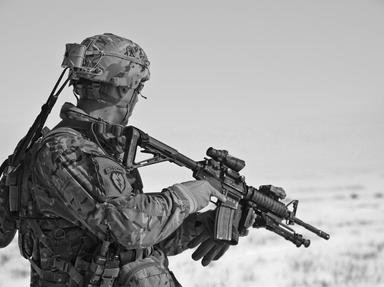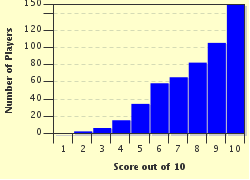Quiz Answer Key and Fun Facts
1. The two handed sword used by the Scots was known by which of these names?
2. The khukri is a knife used by soldiers from which Asian country?
3. One of the most effective weapons of mediaeval times, the longbow was mainly made from which of these woods?
4. The improvised weapon of a bottle containing flammable liquid, with a wick to light it, is known as a Molotov ___?
5. The acronym of IED has been reported regularly in the early twenty-first century in connection with the Iraq War. The I stands for 'improvised' and the E for 'explosive'. What is the D?
6. Chemical weapons were used in the Vietnam War. Which colour was associated with the main herbicide used by the US forces?
7. The crossbow fires a missile which is known as a quarrel or by which four letter name?
8. The hand held Japanese throwing weapons shown in the picture are known by which of these names?
9. The tank was first used in battle by the British army during which conflict?
10. What name is given to the long pointed weapon carried by knights and mounted soldiers and particularly associated with jousting?
Source: Author
rossian
This quiz was reviewed by FunTrivia editor
stedman before going online.
Any errors found in FunTrivia content are routinely corrected through our feedback system.


